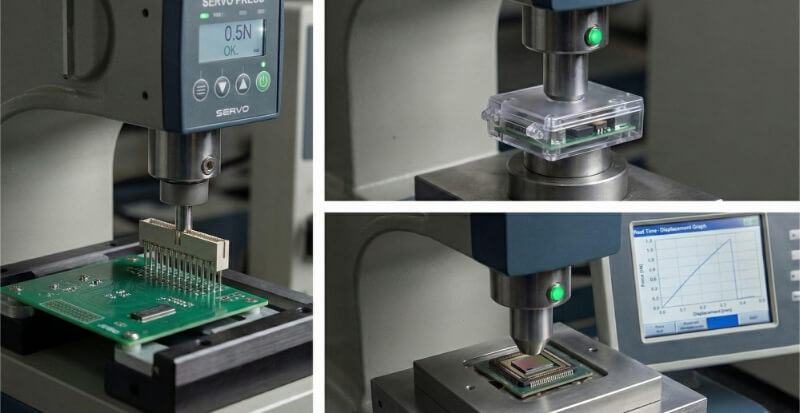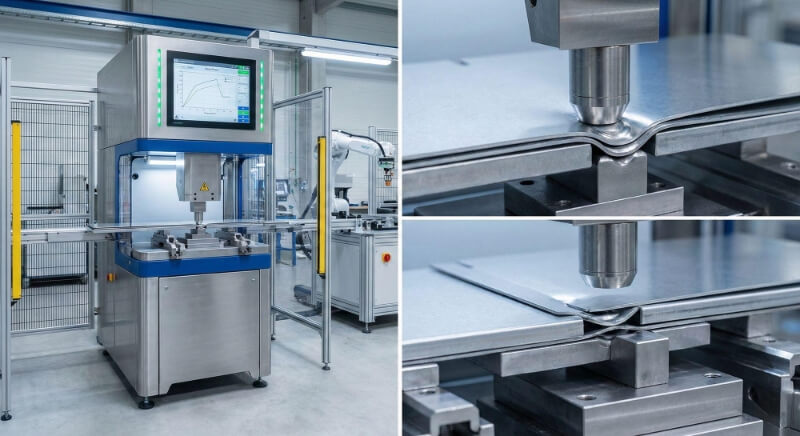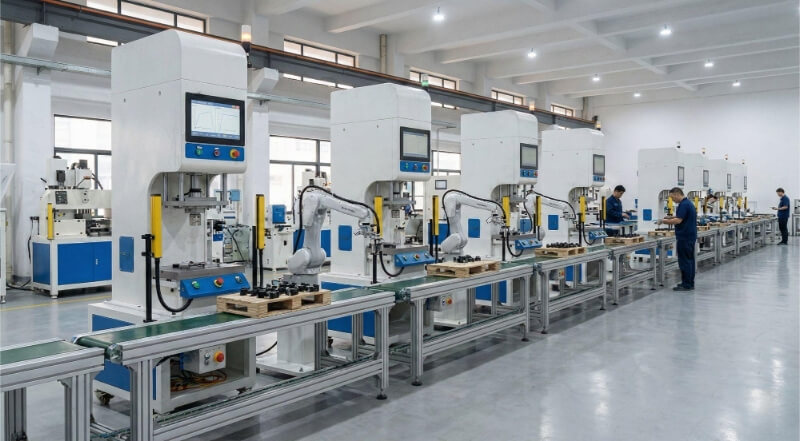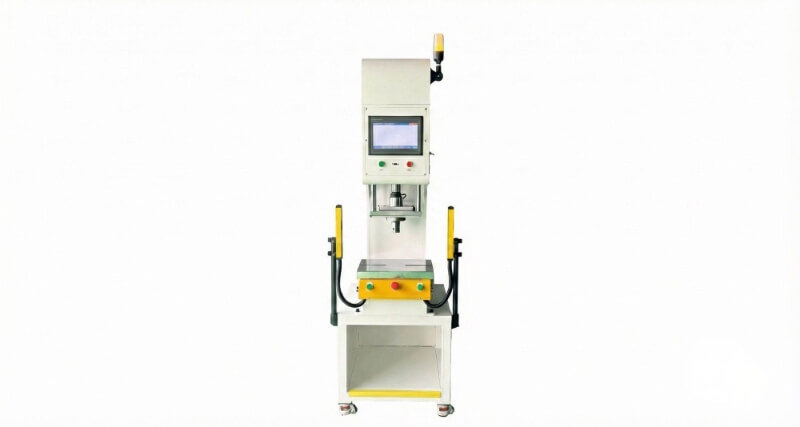Выбор металла может сделать или разрушить ваш проект. Неправильный выбор - и вам придется избегать дорогостоящих ошибок и некачественных результатов. Но выберите подходящий металл, и вы откроете мир возможностей. Алюминий и сталь - два популярных варианта, каждый из которых обладает уникальными достоинствами. Так какой же из них выбрать?
Алюминий отличается легкостью и коррозионной стойкостью, а сталь - прочностью и экономичностью. Оба металла занимают достойное место в современном производстве и дизайне. Выбор зависит от потребностей вашего проекта, бюджетных ограничений и требований к производительности.
Давайте рассмотрим основные различия между алюминием и сталью. Мы сравним их свойства, области применения, плюсы и минусы, чтобы помочь вам определиться с выбором следующего проекта.
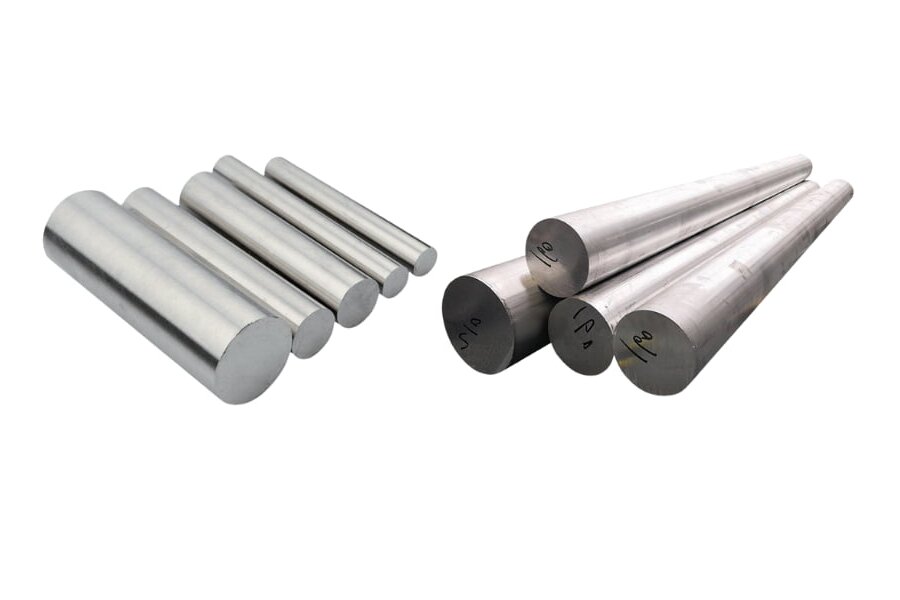
Алюминий против стали: Понимание основ
Алюминий: его свойства, образование и преимущества
Алюминий - легкий серебристо-белый металл. Это третий по распространенности элемент в земной коре. Мы добываем его из бокситовой руды с помощью процесса, называемого электролизом. Этот метод позволяет отделить алюминий от атомов кислорода в руде.
Алюминий обладает рядом важнейших свойств. Он легкий, его плотность составляет примерно одну треть от плотности стали. Это делает его идеальным для применения в тех случаях, когда вес имеет значение. Кроме того, этот металл хорошо противостоит коррозии. При контакте с воздухом он образует тонкий оксидный слой, защищающий основной металл.
Среди других преимуществ алюминия - высокая тепло- и электропроводность. Он также немагнитен и нетоксичен. Эти свойства делают его универсальным для различных отраслей промышленности.
Сталь: Ее свойства, образование и преимущества
Сталь - это сплав железа и углерода. Мы создаем ее, нагревая железную руду в доменной печи и добавляя углерод. Количество углерода влияет на свойства стали. Большее количество углерода обычно означает более высокую прочность, но меньшую гибкость.
Отличительной особенностью стали является ее прочность. Высокая прочность на разрыв делает ее устойчивой к растяжению и разрушению. Сталь также сохраняет прочность при высоких температурах лучше, чем алюминий.
Сталь обладает хорошей формуемостью и свариваемостью. Ей относительно легко придать форму и соединить. Кроме того, этот металл хорошо поддается переработке, что является значительным экологическим преимуществом. Магнитные свойства стали делают ее полезной в электротехнике.
Алюминий против стали: Сравнительный анализ
Масса
Вес является решающим фактором при принятии многих инженерных и дизайнерских решений. Алюминий здесь лидирует. При том же объеме он весит примерно на треть меньше, чем сталь. Это делает алюминий лучшим выбором для таких отраслей, как аэрокосмическая и автомобильная.
В транспорте более легкие материалы означают более высокую топливную эффективность. Низкая плотность алюминия позволяет создавать более крупные конструкции без чрезмерного увеличения веса. Именно поэтому алюминий часто используется в корпусах самолетов и автомобильных панелях.
Однако больший вес стали лишь иногда является недостатком. Дополнительная масса обеспечивает устойчивость и крепление в некоторых случаях, например, при строительстве фундаментов или тяжелых машин.
Сила
Когда речь идет о прочности, сталь - чемпион в тяжелом весе. Она обладает более высоким пределом прочности на растяжение, чем алюминий, и может выдержать большее напряжение, прежде чем сломаться. Это делает сталь идеальным материалом для несущих конструкций и применения в условиях высоких нагрузок.
Соотношение прочности и веса стали впечатляет. Несмотря на то, что она тяжелее, для достижения той же структурной целостности, что и алюминий, ей часто требуется меньше материала. В некоторых случаях это может компенсировать недостаток веса.
Алюминий отнюдь не слаб. Многие алюминиевые сплавы обладают отличной прочностью для своего веса. Однако сталь, как правило, занимает первое место в тех случаях, когда абсолютная прочность имеет первостепенное значение.
Податливость
И алюминий, и сталь - податливые металлы, но ведут они себя по-разному. Алюминий, как правило, более податлив, чем сталь. Ему легче придать сложную форму без трещин и изломов. Это свойство делает алюминий популярным в промышленности, где требуются замысловатые конструкции или тонкостенные детали.
Сталь, хотя и менее податлива, чем алюминий, все же обладает хорошей пластичностью. Ее ковкость можно регулировать с помощью различных легирующих элементов и термической обработки. Эта универсальность позволяет адаптировать сталь к конкретным процессам формования.
Высокая пластичность алюминия может быть выгодна в таких производственных процессах, как штамповка и экструзия. Для придания ему нужной формы часто требуется меньшее усилие, что потенциально снижает затраты на оснастку и потребление энергии.
Теплопроводность
Алюминий превосходит сталь по теплопроводности. Он эффективнее передает тепло, что делает его отличным выбором для теплообменников и систем охлаждения. Именно поэтому алюминий часто можно встретить в радиаторах и кондиционерах.
Более низкая теплопроводность стали может быть преимуществом в некоторых случаях. Она лучше изолирует от перепадов температуры. Сталь - хороший выбор для тех случаев, когда необходимо поддерживать постоянную температуру, например, при строительстве зданий.
В электронике высокая теплопроводность алюминия помогает отводить тепло от компонентов. Это очень важно для предотвращения перегрева таких устройств, как ноутбуки и смартфоны.
Устойчивость к коррозии
Алюминий обладает естественной устойчивостью к коррозии. При контакте с воздухом он образует тонкий оксидный слой, который защищает основной металл. Это свойство самовосстановления делает алюминий очень устойчивым к ржавчине и другим видам коррозии.
Сталь, особенно углеродистая, подвержена ржавчине при воздействии влаги и кислорода. Однако нержавеющая сталь - сплав, содержащий хром, - обладает превосходной коррозионной стойкостью. Она образует защитный слой оксида хрома, подобный оксидному слою алюминия.
В морской среде или на открытом воздухе коррозионная стойкость алюминия позволяет снизить затраты на обслуживание и продлить срок службы изделий. Сталь часто требует дополнительной обработки или покрытия для аналогичной защиты.
Расходы
Сталь обычно выигрывает по стоимости. Как правило, она дешевле алюминия в отношении стоимости сырья и обработки. Это делает сталь привлекательным вариантом для крупномасштабных проектов, где бюджет является первоочередной задачей.
Более высокая первоначальная стоимость алюминия может быть компенсирована его меньшим весом и лучшей коррозионной стойкостью в некоторых областях применения. В течение срока службы изделия алюминий может оказаться более экономичным благодаря снижению затрат на обслуживание и транспортировку.
Разница в цене между двумя металлами может колебаться в зависимости от рыночных условий и глобальных цепочек поставок. При принятии решения всегда стоит проверять текущие цены.
Сравнение физических свойств
Давайте разберем некоторые важные физические свойства:
- Плотность: Алюминий (2,7 г/см³) против стали (7,85 г/см³)
- Температура плавления: Алюминий (660°C) против стали (1370-1530°C)
- Электропроводность: Алюминий (37,7 млн. с/м) против стали (6,99 млн. с/м)
- Предел текучести: Алюминий (7-11 МПа) против стали (250-1000 МПа, в зависимости от марки)
Эти различия подчеркивают, почему выбор материала так важен. Уникальные свойства каждого металла делают его подходящим для различных областей применения.
Алюминий и сталь: Краткое сравнение
Вот краткое сравнение алюминия и стали в виде таблицы:
| Недвижимость | Алюминий | Сталь |
|---|---|---|
| Масса | Легче (1/3 веса стали) | Тяжелее |
| Сила | Хорошее соотношение прочности и веса | Более высокая абсолютная прочность |
| Податливость | Более податливые | Менее податливые, но все же поддающиеся формовке |
| Теплопроводность | Выше | Ниже |
| Устойчивость к коррозии | Отлично (образует защитный оксидный слой) | Варьируется (углеродистая сталь ржавеет, нержавеющая сталь устойчива) |
| Расходы | Как правило, дороже | Обычно дешевле |
| Плотность | 2,7 г/см³ | 7,85 г/см³ |
| Температура плавления | 660°C | 1370-1530°C |
| Электрическая проводимость | 37,7 млн. с/м | 6,99 млн. с/м |
| Предел текучести | 7-11 МПа | 250-1000 МПа (зависит от марки) |
Алюминий против стали: Области применения
Алюминий и сталь имеют свои преимущества при использовании в реальных условиях. Давайте посмотрим, где эти металлы действительно сияют.
Алюминий занимает лидирующие позиции:
- Аэрокосмическая промышленность: Благодаря своим легким свойствам он идеально подходит для самолетов и космических аппаратов.
- Автомобильная промышленность: Автопроизводители используют его для снижения веса автомобиля и повышения топливной эффективности.
- Электроника: Вы найдете его в ноутбуках, смартфонах и других портативных устройствах.
- Упаковка: Подумайте о банках для напитков и контейнерах для еды.
Сталь доминирует:
- Строительство: Это основа небоскребов, мостов и инфраструктуры.
- Тяжелая техника: Экскаваторы, краны и промышленное оборудование полагаются на прочность стали.
- Приборы: Во многих бытовых приборах, таких как холодильники и стиральные машины, используется сталь.
- Инструменты: От гаечных ключей до электроинструментов - сталь является самым популярным материалом.
Оба металла находят свое место в различных отраслях промышленности. Ваш выбор зависит от конкретных требований вашего проекта.
Алюминий и сталь: как выбрать правильный сплав
Выбор подходящего сплава для вашего проекта имеет решающее значение. Вот руководство, которое поможет вам выбрать между алюминиевыми и стальными сплавами:
Определите требования к проекту:
- Ограничения по весу
- Потребности в силе
- Требования к коррозионной стойкости
- Бюджетные ограничения
- Условия окружающей среды
- Методы изготовления
При необходимости используйте алюминиевые сплавы:
- Легкие решения (например, 6061-T6 для общего применения)
- Отличная коррозионная стойкость (например, 5052 для морской среды)
- Высокое соотношение прочности и веса (например, 7075 для аэрокосмической отрасли)
- Хорошая теплопроводность (например, 1100 для теплообменников)
При необходимости выбирайте стальные сплавы:
- Высокая прочность (например, 4140 для тяжелого оборудования)
- Экономичность (например, 1018 для общего конструкционного применения)
- Магнитные свойства (например, нержавеющая сталь 430 для магнитных применений)
- Термостойкость (например, нержавеющая сталь 310 для высокотемпературных сред)
Оцените процесс производства:
- Сварка требования (оба металла свариваются, но технологии различаются)
- Необходимость механической обработки (алюминий, как правило, легче поддается обработке)
- Формирование сложность (алюминий более податлив)
Учитывать чистота поверхности варианты:
- Анодирование алюминия
- Гальванизация или порошковое покрытие для стали
Оцените долгосрочное обслуживание:
- Естественная коррозионная стойкость алюминия
- Сталь нуждается в защитных покрытиях в некоторых средах
Помните, что лучший выбор часто связан с компромиссами. Тщательно взвесьте все факторы, чтобы найти оптимальный сплав для конкретного применения.
Заключение
У алюминия и стали есть свои сильные стороны и идеальные области применения. Алюминий отлично подходит для легких, устойчивых к коррозии конструкций, а сталь - для высокопрочных и экономичных. Ваш выбор зависит от конкретных потребностей проекта, баланса между весом, прочностью, стоимостью и условиями окружающей среды. Оба металла продолжают играть важнейшую роль в современном производстве и машиностроении.
Вам нужен надежный производитель деталей из листового металла? Шенген – это то место, куда стоит поехать. Мы специализируемся на лазерной резке листового металла, гибке, отделке поверхности и обработке на станках с ЧПУ. Обратитесь в Шенген Сегодня и обратитесь за помощью к профессионалам!
Часто задаваемые вопросы
Как алюминий и сталь ведут себя в экстремальных погодных условиях?
Алюминий лучше работает в холодных и прибрежных условиях благодаря своей коррозионной стойкости. Сталь может стать хрупкой на сильном морозе, но лучше справляется с высокими температурами, чем алюминий. Оба металла можно обрабатывать или легировать для улучшения их характеристик в суровых условиях.
Что служит дольше, алюминий или сталь?
Алюминий дольше сохраняется в коррозионной среде благодаря естественному оксидному слою. Однако некоторые виды стали, например нержавеющая, могут сравниться с алюминием по долговечности или даже превзойти его. Срок службы обоих металлов в значительной степени зависит от конкретной среды и области применения.
Трескается ли алюминий легче, чем сталь?
Алюминий, как правило, более подвержен усталостному растрескиванию, чем сталь. Однако он также более податлив, что позволяет ему гнуться, не ломаясь. Более высокая прочность стали на растяжение делает ее более устойчивой к растрескиванию при высоких нагрузках.
Насколько прочнее сталь по сравнению с алюминием?
Сталь обычно в 2-3 раза прочнее алюминия на разрыв. Однако в некоторых случаях соотношение прочности и веса алюминия может быть выше. Точная разница в прочности зависит от конкретных сравниваемых сплавов.
Привет, я Кевин Ли

Последние 10 лет я занимался различными формами изготовления листового металла и делился здесь интересными идеями из своего опыта работы в различных мастерских.
Связаться

Кевин Ли
У меня более десяти лет профессионального опыта в производстве листового металла, специализирующегося на лазерной резке, гибке, сварке и методах обработки поверхности. Как технический директор Shengen, я стремлюсь решать сложные производственные задачи и внедрять инновации и качество в каждом проекте.

